How to Create a Content Marketing Strategy (and Get the Maximum ROI)?
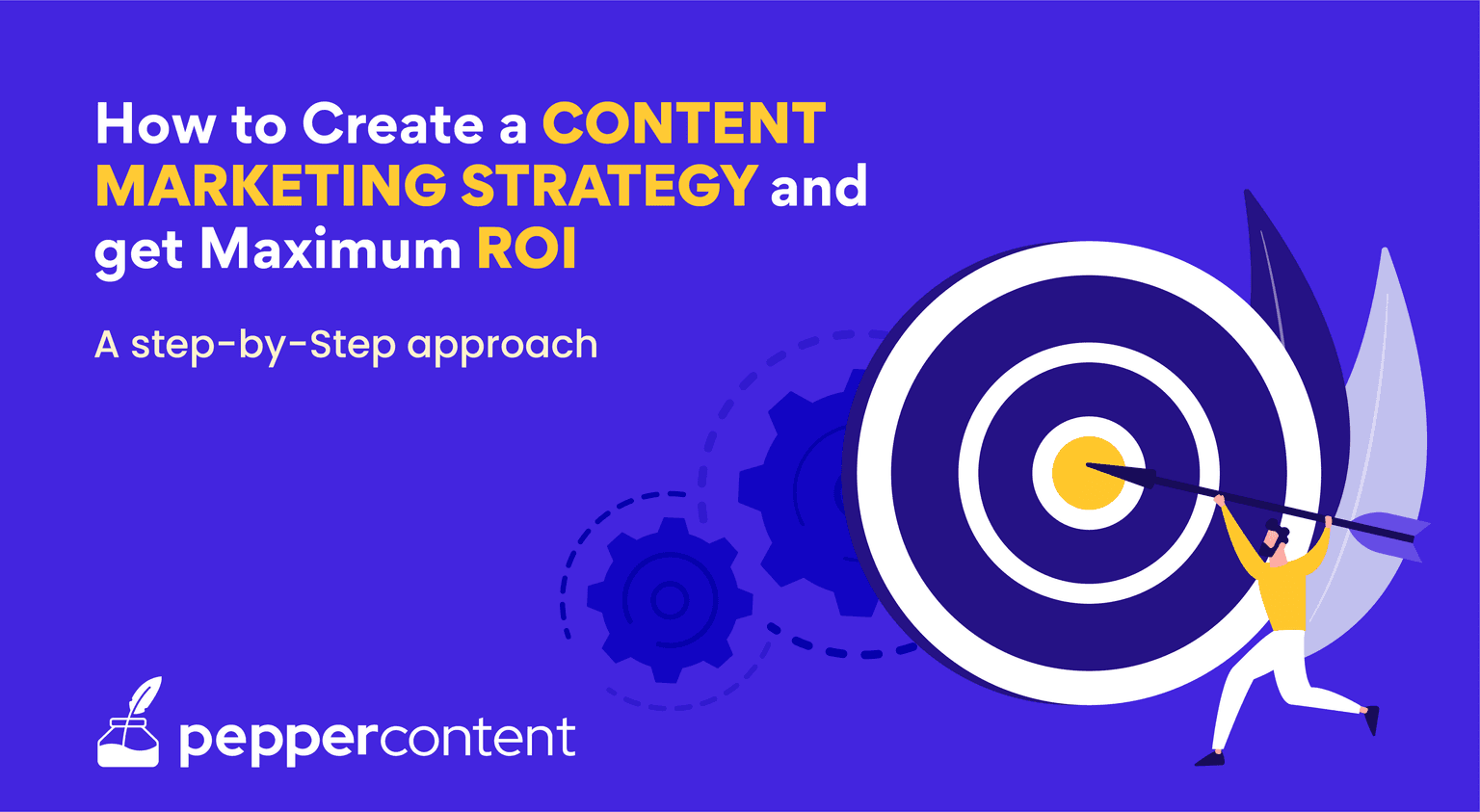
Table of Contents
- Overview of Content Marketing Strategy
- Why Strategize Content?
- Why Content Marketing?
- What is Content Mapping and How is it Related to the Customer Journey?
- Content for Different Stages of a Marketing Funnel
- Difference Between Content Writing, Content Strategy, and Content Marketing
- Elements of a Content Marketing Strategy
- Step-by-step Guide to Creating a Content Marketing Strategy
- Additional Forms of Content Marketing
- Key Takeaways
- Conclusion
- FAQs
To build a successful content marketing strategy, it is first important to understand what content marketing is all about. As the Content Marketing Institute puts it, content marketing is “a strategic marketing approach focused on creating and distributing valuable, relevant, and consistent content to attract and retain a clearly-defined audience—and, ultimately, to drive profitable customer action”.
In other words, we can say that with a problem-solving approach, creating marketing content is a way in which brands can tell their stories, connect with their customer base and boost sales. Any piece of editorial content circulated by companies in the form of articles, videos, infographics, or images is deemed a form of content marketing. Such brand content is planned extensively by an editorial team.

Overview of Content Marketing Strategy
In this day and age, when information is available at our fingertips, we are all experiencing a kind of information overload. As people’s attention span gets shorter, marketable content is constantly undergoing modifications to engage a wider audience. But all such efforts will only bear fruits if a brand creates an impactful content marketing strategy in the first place, ensuring a steady increase in sales and popularity of a brand.
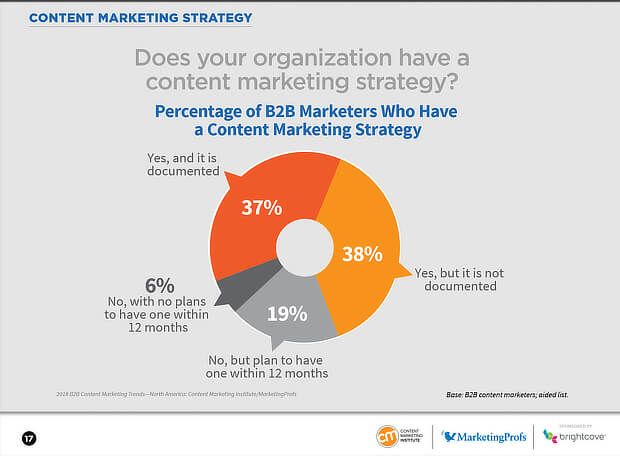
Without creating a content marketing strategy, content can appear disorganized and won’t influence audiences.
A content marketing strategy is not just about creating a content publishing plan, it’s also about having a proper editorial team to execute and manage existing and newly produced content, repurposing old content, and having a solid distribution plan to aid discovery.
Why Strategize Content?
Companies and small businesses that have strong content marketing strategies are said to have better ROI with regard to their content investments. An overall content marketing strategy and periodical reviews and audits help in understanding which type of content works and which does not. In fact, the most successful B2B companies have a documented content marketing strategy.
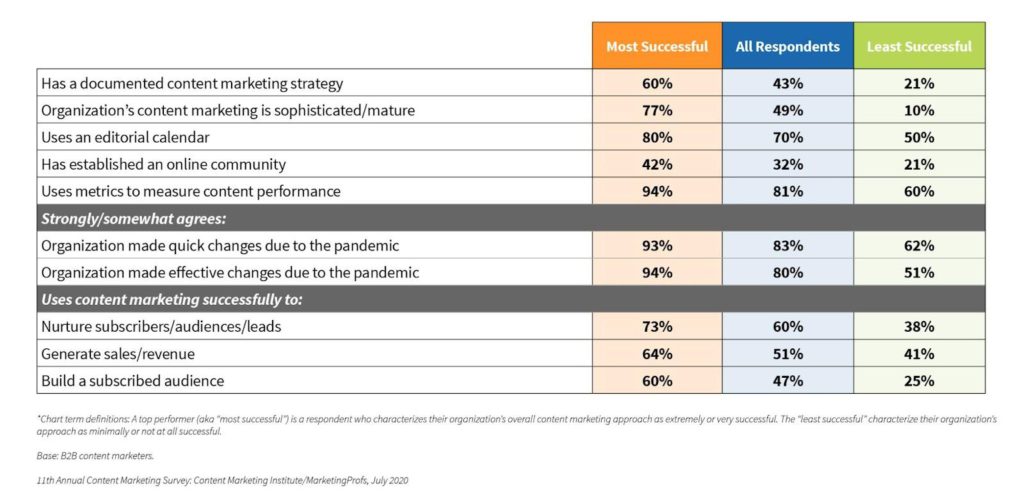
Also, a planned budget and a clear outline are needed. As per a report by the Content Marketing Association, many businesses allot more than 20% of their marketing budget to content marketing alone, and that figure has been growing since 2016.
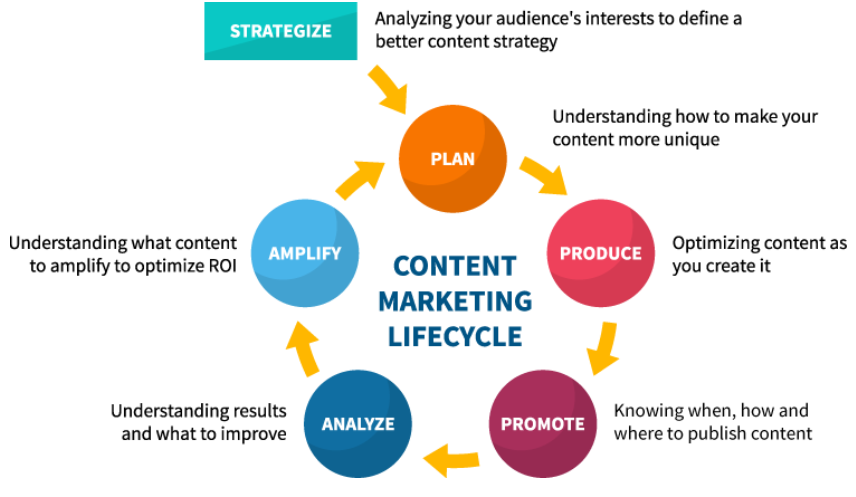
Why Content Marketing?
Here are a couple of important reasons companies must consider investing substantively in creating a content marketing strategy.
For building a brand
According to the Secret Life of Search study, 82% of searchers would choose a brand they are familiar with. When devising a content marketing strategy, efforts should be focused on how to create ‘brand familiarity’ to ensure that more and more people visit your page and depend on your brand for information. It is believed that brand familiarity often turns out to be more persuasive than search engine rankings. If a person were to search for an item, they are more likely to have a particular brand in mind. They would scroll down to look for that particular page before considering unfamiliar brands, even though the latter might be higher up in the search engine rankings.
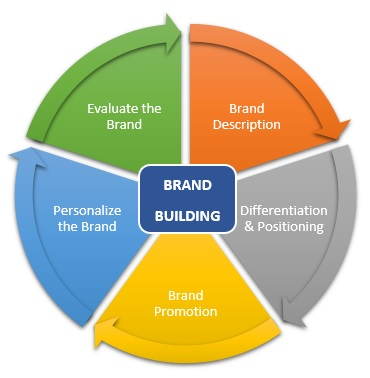
For customer engagement and loyalty
When you invest time and money in creating content, you shouldn’t have a short-term goal in mind. Strategic marketing content curation ensures that you build a bond with your readers while encouraging them to engage in discussions and participate in contests or other such promotional activities. This, in turn, leads to a loyal audience who is interested not only in your product but also in the value (information, knowledge, social awareness, lifestyle changes, and so on) your brand brings into their lives.
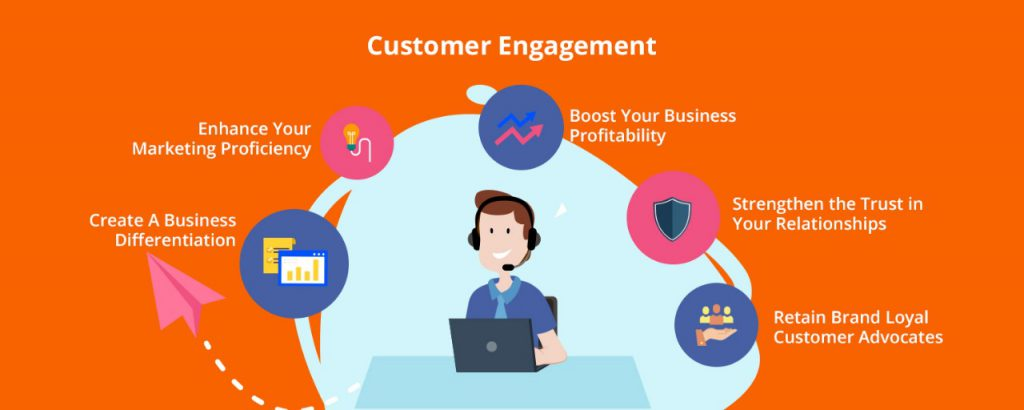
What is Content Mapping and How is it Related to the Customer Journey?
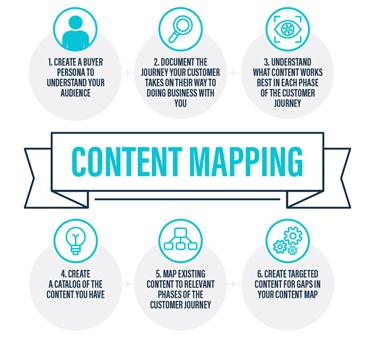
The customer journey refers to the timeline and relationship between a company and its customers. Right from the awareness stage (more on this later), a customer’s buying experience can be mapped. Customer experience mapping helps businesses strategize their content and create it in a way that ensures greater ROI or return on investment.
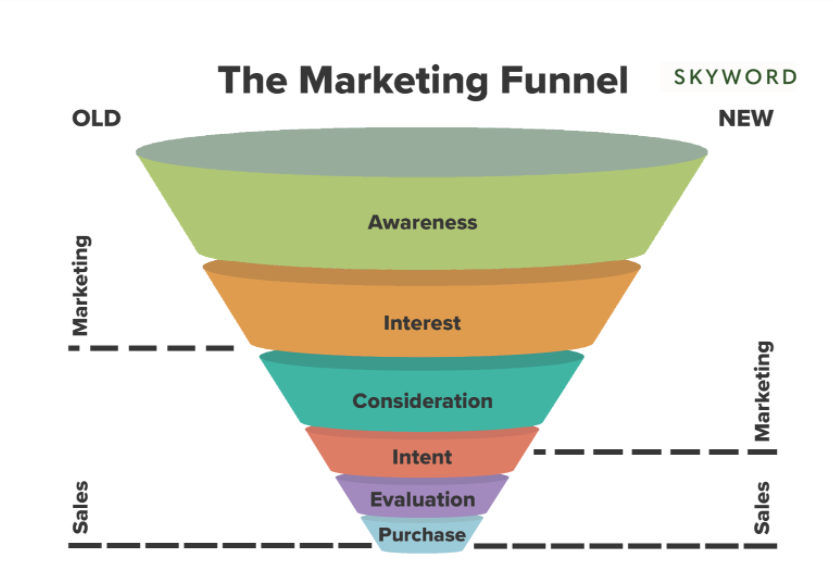
Content for Different Stages of a Marketing Funnel
Before you start drawing up a content marketing strategy, you must try to understand what a marketing funnel is because it shows you how customers go through various stages while making a purchase decision. Content can act as a catalyst at each of these stages, slowly but surely engaging audiences and turning prospects into actual buyers.
1. Awareness stage content
The wide top of a marketing funnel corresponds to the awareness stage. You can call this the starting point of a content marketing strategy. This is when your customers start becoming aware of your products or services. At the awareness stage, the purpose of a content marketing strategy should be to curate and create content to help customers understand their problem areas. It’s a delicate stage where you don’t want to come across as being pushy with sales-oriented content. Instead, you focus purely on customers’ needs. This phase is all about building credibility for your brand and laying the foundation of a relationship with your prospects through educational, informative, and thought leadership content. Remember that at this stage, a customer is just looking for information or solutions to his or her problems. They haven’t been turned into loyal customers yet – conversion can take some time.

Let’s cite the example of a SaaS company. It is estimated by Hubspot that the average sales cycle is about 3 months for a SaaS company.
At this stage of a content marketing strategy, companies need to focus on:
- Building organic traffic by producing content that directs people to your website.
- Creating content that addresses specific goals and challenges that prospective customers might be facing.
- Concentrating on PR initiatives.
- Following the tried-and-tested word-of-mouth efforts and networking.
- Opting for paid advertisements that offer people a glimpse into interesting content.
For example, if your company sells accounting software, advertise your content by simply creating posts around accounting. Create generic content on the subject and its usefulness or existence of software in general. This engages readers, prompting them to delve deeper into what a website might have to offer. At this stage, prospective customers are engaged with general information.
2. Consideration stage content
At the consideration stage, a prospect is now moving closer to taking a decision. This means your content needs to change accordingly. It is time to reveal how your product or service can help in solving his or her problems. The content format also undergoes a change. While at the awareness stage you are probably dabbling in more text-based blog content, at this stage, you might want to consider using long-form content like ebooks, webinars, and presentations.
Points to consider:
- Create FAQs addressing common problems that potential customers face. Offer solutions to these problems and how your product might help in this regard.
- Include testimonials and reviews from existing clients or create new ones in a similar format.
- Include explainer videos that solve issues and capture your audience’s attention while also giving an overview of what your product is capable of offering.
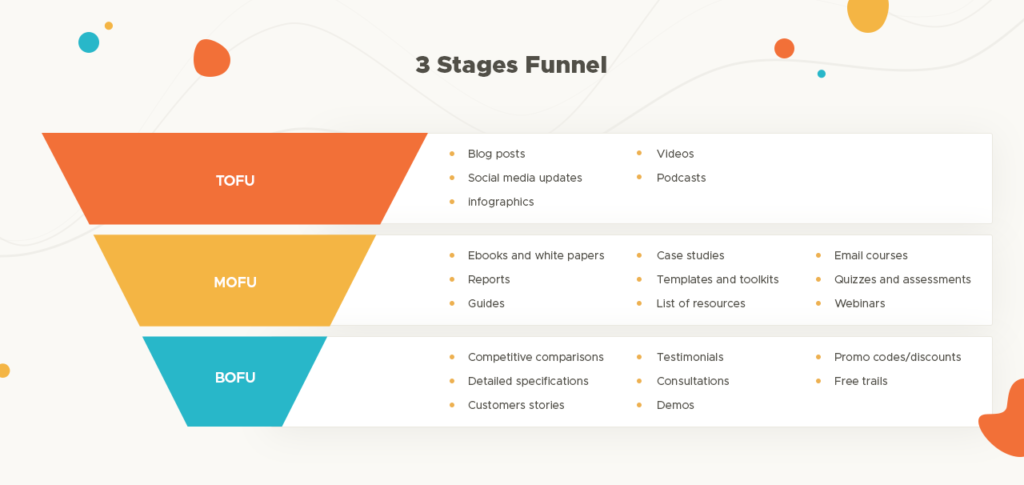
Even at this stage, buyers are not necessarily going to purchase your products or services. So it is a delicate stage where you cannot be too pushy. Strategize content to retain prospects and help them move to the next stage – the decision stage.
3. Decision stage content
At this stage, buyers rely on your content for valuable insights. They want to know more. They have chosen to value your brand and content, and usually start showing interest.
Creating marketing content at this stage must be of high quality, accurate, and provide insights with the help of a team of experts in a specific domain. The decision stage content must support all the claims made at the previous two stages. For instance, most B2B customers rely heavily on statistics or content that provides hard facts and data at this final decision-making stage. Case studies and testimonials are also important content types used at this stage.
A well-planned content marketing strategy is thus, vital at every stage of the marketing funnel.
Difference Between Content Writing, Content Strategy, and Content Marketing
Content marketing strategy is one of the first steps taken to create or plan the kind of content you want your company or editorial team to publish. It involves the planning phase where you brainstorm and discuss ideas, understand client needs, and decide on how to produce the right kind of content.
The next step is the act of producing actual content. Written content supported by videos, images, and other graphics is what content writing is all about today.
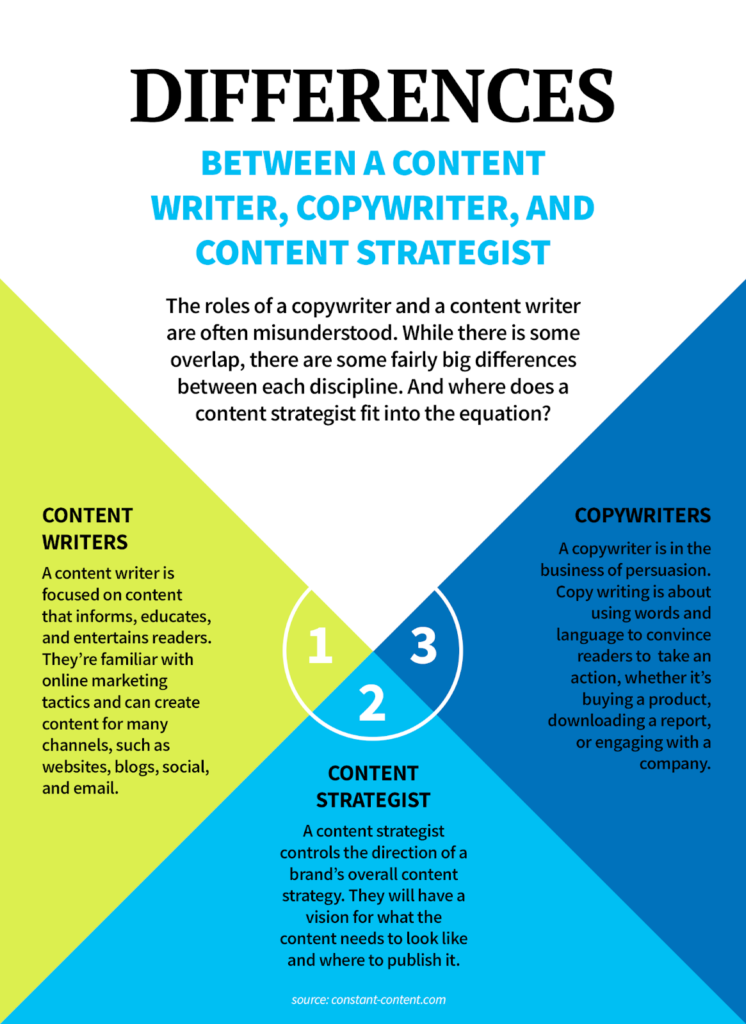
Finally, creating marketing content covers the entire process of planning, writing, and promoting content. But it does not stop there; it goes beyond simply covering the aspects of creating and strategizing content. You may have a great editorial team with brilliant content, but efforts are wasted if your content does not reach the targeted audience. Content marketing involves finding the right channels to make your content seen and heard.
Elements of a Content Marketing Strategy
Here are a few best practices before we build a content marketing strategy:
- Ensure that content follows brand guidelines and brand values and meets the marketing objectives.
- Plan around actual data and market research.
- Take into account current trends.
- Set actionable goals.
- Set up an infrastructure to help track the right metrics.

Step-by-step Guide to Creating a Content Marketing Strategy
Drawing up an effective content marketing strategy need not be complicated. Here are some simple steps to follow.
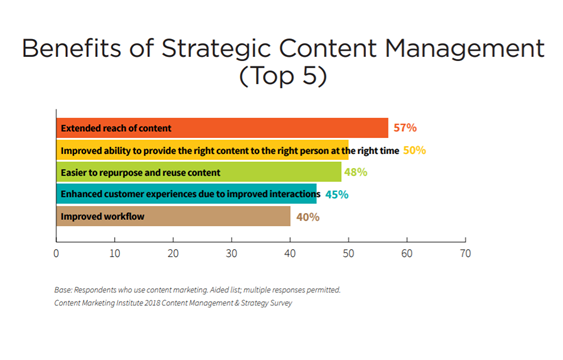
1. Set your goals
Goal-setting is a crucial step. With the help of defined goals, you can ensure that your content team is on the same page with marketing and sales teams. Also, success becomes more measurable with defined goals that are actionable, and not vague.
Goal-driven content should be able to address the following questions:
- Is your content driving social engagement?
- Is it solving a problem?
- Is your content driving traffic?
- Have you done your SEO?
- Do you have a specific topic and a set of keywords or ideas to focus on?
- Do you have a fixed content length and layout?
Every marketing content piece that you produce may not cover all these criteria. But try to incorporate as many as possible.
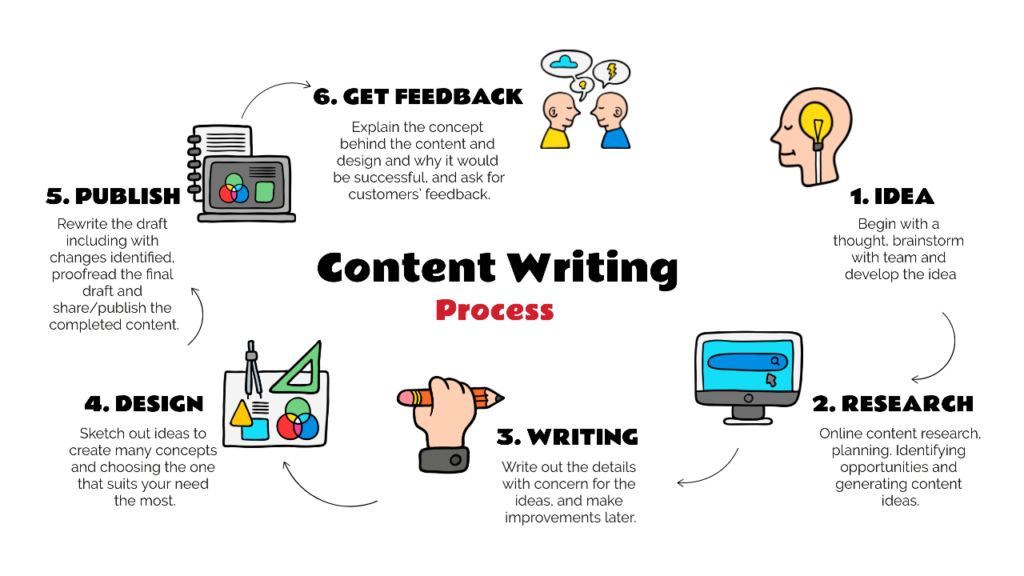
2. Define your user personas
Content marketing strategies must cater to a certain section of your audience. Identifying customer demographics, needs, and preferences are essential. Building a user persona helps in creating content that aligns with the goals and needs of your targeted audience. Without a user persona, you will end up creating content that is random without a specific audience in mind.
3. Do a content audit
Content marketing has been around for decades, but the style of content keeps changing constantly. A content audit helps you take inventory of your past and current content pieces. That can help you plan or adjust future strategies. Outdated data, articles, and blog posts that have no relevance in the present times can be done away with or updated. The process collects all kinds of content produced by your company and analyzes them for audience reception and ROI.
A comprehensive audit report based on these factors will help you gauge and strategize the content you need to create for the future. It can also show you the areas that need improvement or modification and the ones that have always yielded success.

4. Create an editorial calendar
Editorial calendars help creating marketing content in advance. They guide content teams and help them keep pace with the marketing goals of a business.
An editorial calendar is always a work in progress, open to modifications. However, planning, strategizing, and churning out content cannot be done haphazardly. This will always impact the quality of content. A content calendar also ensures that you don’t miss upcoming events. You can plan and brainstorm ideas well in advance with ample time to publish content.

While you can always use popular tools like Microsoft Excel, invest in editorial tools that offer additional calendar features. These enable teams to collaborate in real-time. It is an organized approach that can help in creating better audit reports for the future and assess the success and failure of each of your content campaigns.
5. Create a content infrastructure
Most of the content that brands produce today is in a digital form. Investing in a solid content infrastructure that can support your content marketing goals and actions is essential. Choose the right kind of tools, put together a team of subject matter experts, writers and editors, get marketers who can run campaigns and manage the technical aspects of the processes. These are some of the most important elements of excellent content infrastructure.
Content infrastructure can include any of the following:
- Investing specifically in marketing software and tools.
- Building a website with an outstanding CMS (content management software)
- Hiring or outsourcing for the right roles
- Creating calendars and publishing timelines
Additional Forms of Content Marketing
Social media content
According to a survey, more than 30% of traffic to a brand is said to have come from social media alone. Every platform has a different format and style of content. So while your brand might be present on different platforms, creating marketing content cannot simply be reproduced on all of them. For instance, long-form video content might be suitable for YouTube, but it must be converted into short-form videos and images for a platform like Instagram. Content shared on Tumblr cannot be the same as shared on a professional networking site like LinkedIn. Content strategy must be built around these parameters. Since social media platforms are interactive, get feedback from your audience and tailor your content accordingly.
Live videos
Live videos are a great way to engage customers and facilitate interactions. They can be strategized around topics and interest areas based on your user personas. Through live videos, you can directly address your customers’ needs and queries.
Paid advertising
Paid advertising has been around since the inception of content marketing. It now exists in the form of content created by influencers and brand collaborations, apart from in-house content promoted on various platforms for a certain fee. Depending on the audience you are targeting, reaching out to specific channels and influencers is essential to ensure maximum ROI through paid advertising. Just make sure that the paid advertising content must not sound too pushy with sales pitches.
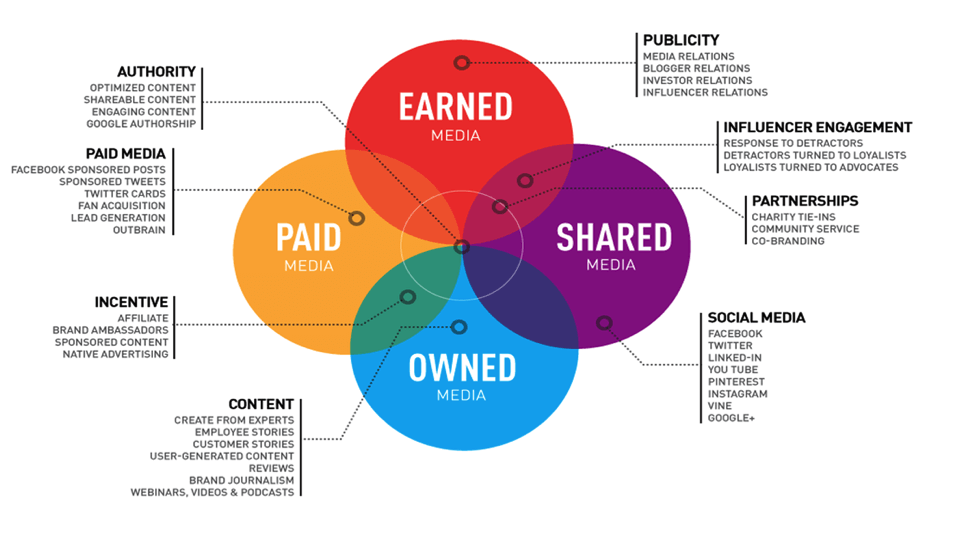

Key Takeaways
- A content marketing strategy does not just involve publishing content. It also involves editing content to suit the interests of the audience, keeping up with ongoing trends, using various content formats, etc. Creating a content marketing strategy also involves maintaining a consistent posting schedule and using appropriate distribution channels.
- To create a content marketing strategy, one must have a thorough understanding of their target audience, their needs, and the type of content they consume.
- Search engine optimization (SEO) is a crucial aspect of creating a content marketing strategy. It is the practice of including search phrases or important keywords within the content that are often looked up by users. SEO helps search engines find relevant content for users.
- There are three stages of creating marketing content, awareness, consideration, and decision-making stage. Every content published in each stage aims to convert a website visitor into a paying customer.
- The two main purposes of creating a content marketing strategy is to build brand awareness and foster customer engagement.
Conclusion
A content marketing strategy can make or break your content plans and is essential before you dive deep into the world of content. The creation of content is simple as opposed to ensuring high-quality and finding the right audience for it. This is where the science of marketing comes in. So go ahead, define your strategy in a result-oriented manner with a big focus on measuring ROI, and you will be on the right track!
FAQs
There is a particular formula to determine typical ROI calculations: ROI = Return – Investment ÷ Investment. There are several tangible manifestations of creating successful content marketing strategies. You could track website visits, blog subscriptions, and lead generations.
Five steps to creating a content marketing strategy include:
1. Set your goals
2. Define user personas
3. Do a content audit
4. Create an editorial calendar
5. Create a content infrastructure
The most valuable metrics that can help you track and evaluate your content’s performance:
– Website Traffic
– SERP Ranking
– Engagement
– Conversions
– Returning Vs. New Users
Create a content marketing strategy that will help the sales team close more deals. This includes:
– Creating micro-content
– Fact-based marketing
– Product demos
– Focus on specific needs
A content marketing strategy can be defined as a plan that helps a brand build an audience by frequently and consistently publishing and promoting content that converts people into customers.
Content marketing examples include everything from blogs, articles, videos, podcasts, e-books, webinars, etc., that address specific pain points of people bringing them value. Read about 30 excellent content marketing examples to get inspired from.
Latest Blogs
Explore how Google’s 2025 AI search updates triggered ranking chaos. Learn actionable strategies to adapt your SEO for AI Overviews, zero-click searches, and SERP volatility. Stay ahead now.
Learn how to rank on AI search engines like ChatGPT, Perplexity, and Gemini by optimizing your content for authority, structure, and relevance. Stay ahead in AI-driven search with this strategic guide.
Explore the best healthcare SEO services for your medical practice. Improve online visibility and effectively reach more patients in need of your services.
Get your hands on the latest news!
Similar Posts

Content Marketing
5 mins read
Top 10 Financial Marketing Agencies to Help Your Business Succeed

Content Creation
5 mins read
AI for Marketers Unlocking Smarter Strategies for Content Creation

Content Marketing Strategy
6 mins read